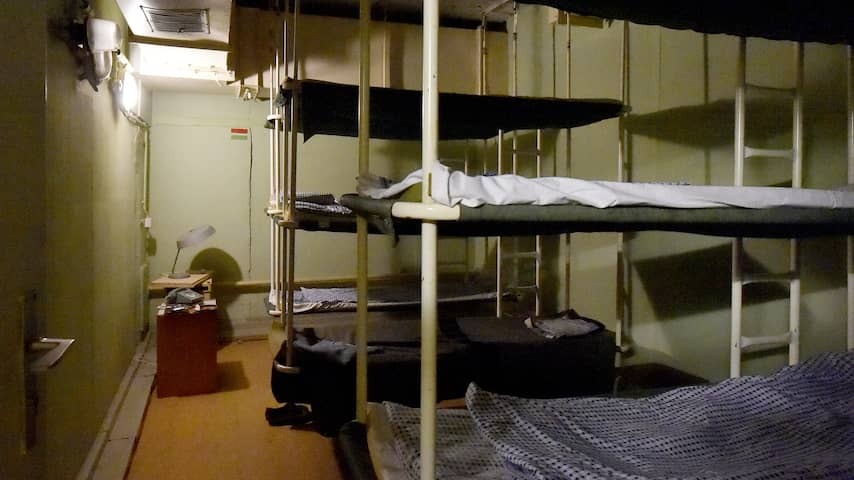
Germany will create shelters for one million people in the coming years. Citizens can seek protection there in, for example, war situations. German policy is in stark contrast to the situation in the Netherlands. In our country, the approach is that citizens are self-reliant.
Building new bomb shelters is very expensive. That is why Germany, for example, is arranging existing metro stations, deep parking garages and basements under buildings as shelter locations.
The new shelters will have all kinds of technical facilities, sanitary facilities, cots and a food supply. Citizens can therefore seek cover there for a longer period of time. According to the German Federal Office for Civil Protection, the bomb shelters are needed “due to the increasing conflicts in Europe,” the Züddeutsche Zeitung reported earlier this month.
Germany is therefore pursuing a very different policy than the Netherlands. In our country, all shelters fell into disuse after the Cold War and many were even dismantled. There are no concrete plans to build bomb shelters again or to redevelop existing locations.
“The question is also whether we need bomb shelters everywhere in the Netherlands,” says researcher Kees Boersma from the Vrije Universiteit Amsterdam. He specializes in crisis management, disaster management and social resilience. In the Netherlands, a more targeted approach is taken, says Boersma. “Every region in our country must carry out a threat analysis and, based on that, decide which precautionary measures must be taken.”
Shelters do not protect against cyber attacks
“Shelters offer protection in war situations, but not against, for example, cyber attacks that cause the electricity grid to fail,” Boersma continues. That is why many municipalities are focusing on realizing emergency aid centers for information provision. Materials can also be stored there. That should help citizens to be self-reliant in crisis situations.
Another major difference with Germany is the responsibility for the protection of citizens. In our country, this has been assigned to municipalities. In Germany, this responsibility lies with the national government.
“Population care, including shelter, is a municipal task,” confirms a spokesperson for the Association of Dutch Municipalities (VNG). But that task is also relatively new. “The relevance of shelter and self-reliance has only recently become topical again.”
Policy focused on awareness, not on sheltering
According to the VNG, ensuring resilience against threats is now mainly focused on (emergency) communication and awareness, but not yet on sheltering. “The threat landscape has also become more diverse,” says the VNG spokesperson. “In addition to war, we may also have to deal with heat, flooding and prolonged power outages.”
According to researcher Boersma, municipalities must map neighborhood communities and volunteer organizations. They often have locations such as community centers and are located close to citizens. According to Boersma, these are ideal locations for emergency aid centers.
According to the VNG, what these emergency aid centers should offer to citizens is still unclear. This could include making water, electricity or sandbags available, but also shelter addresses.
“The port of Rotterdam can be a target for attacks in times of war,” Boersma explains. “I can imagine that Rotterdam will therefore focus on realizing shelter addresses or an early warning system to evacuate citizens.”
In other municipalities, the threat of an attack may be smaller, according to Boersma. As a result, shelter addresses may be less relevant and supporting the population may already be enough.
You may wonder whether the government’s policy is too naive. On the other hand, a threat analysis is to some extent a crystal ball without guarantees that you are prepared for everything. During the Cold War, the Netherlands prepared for an attack with bomb shelters, but that attack never came.
The VNG is in discussion with the minister about the function and financing of the emergency support centers. For the time being, 70 million euros has been released by the central government from 2027. But according to the umbrella organization, that amount is “absolutely insufficient.”
“Municipalities must be able to organize population care during threats and properly implement their support for the population,” emphasizes the VNG spokesperson. “But that requires structural and stronger financing of emergency support centers.”